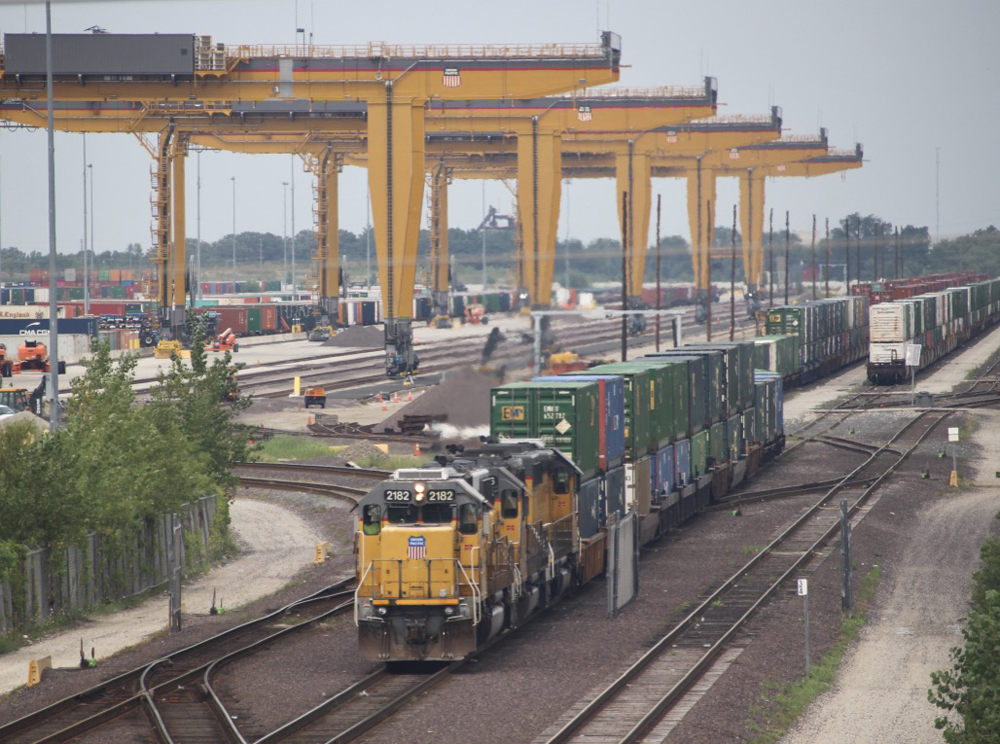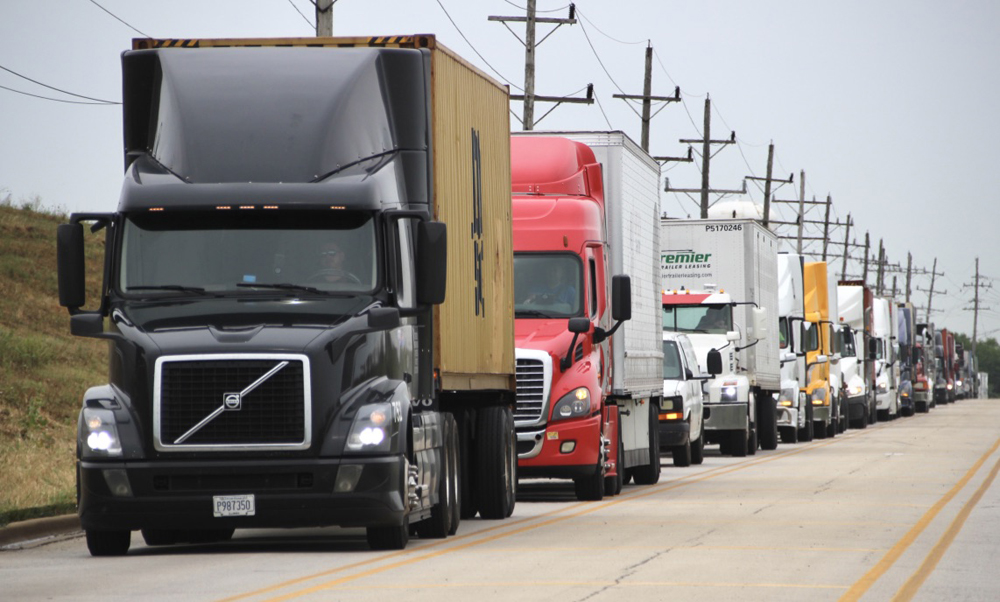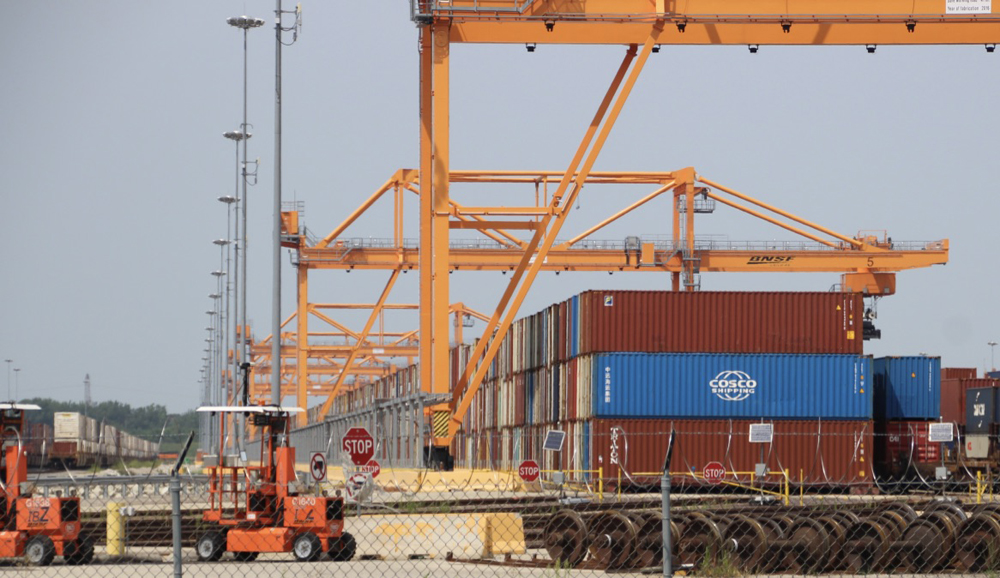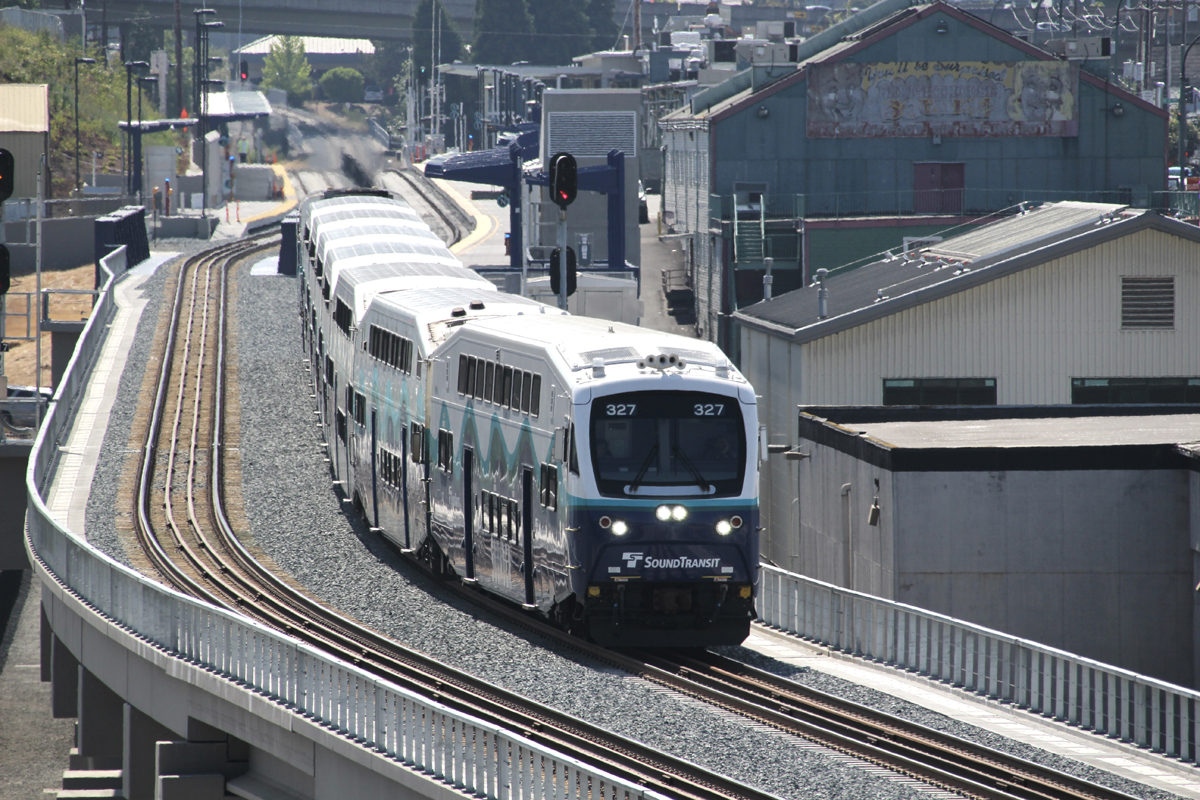
Pandemic-related economic upheaval tangled the global supply chain in 2021, leading to unprecedented congestion at ports and intermodal terminals.
At the onset of the pandemic, imports were reduced to a trickle because Chinese factories shut down. American consumers shifted their spending from experiences to goods, which increased demand and depleted retail inventories to historically low levels. Container imports came charging back beginning in June 2020 thanks to what Port of Los Angeles Executive Director Gene Seroka called a 100-year surge in consumer buying.
The combination of whipsaws in volume, record imports, and the impact of COVID-19 infections and quarantines created congestion that extended from Asian ports, across the Pacific, to the ports of Los Angeles and Long Beach, and on to inland intermodal terminals and warehouses.

Intermodal terminals became clogged over the summer due to a combination of record port volume and shippers and receivers being slow to pick up containers that were unloaded from inbound trains. Warehouses faced labor shortages and pandemic-related restrictions that significantly curtailed their ability to receive and unload containers.
The mismatch between the pace of inbound and outbound intermodal terminal volume was a recipe for trouble. “As even more freight is being put into the global intermodal pipeline, the shortage of chassis, drivers, and labor to support distribution center unloading is causing shipments to back up into rail facilities,” BNSF Railway CEO Katie Farmer wrote in an August letter to the Surface Transportation Board, which in July sought information from each railroad on their intermodal bottlenecks.
The various links in the intermodal supply chain — from ports and main lines to inland terminals, chassis, and truckers who provide drayage — had enough capacity to support the container surge. “But only if all parts of the supply chain do their part,” Farmer wrote. “Operating 24/7 in all parts of the supply chain, not just rail, would generate substantial capacity immediately.”
The intermodal congestion spilled out onto main lines, where BNSF and Union Pacific staged dozens of trains daily until terminal space became available in Chicago and Memphis.

With containers stacking up at their Chicago-area terminals, BNSF and Union Pacific metered inbound intermodal volume to help terminals recover. In July, UP suspended shipments of international containers from all West Coast ports to its Global IV terminal in Joliet, Ill., for a week. At the time, UP had 25 miles of inbound stack traffic staged awaiting room Global IV. BNSF also limited volume to its Logistics Park Chicago for two weeks to help clear a backlog that included 30 inbound trains staged at various points across the system. Norfolk Southern and, to a lesser extent, CSX Transportation also placed limits on volume headed to some of their intermodal terminals as East Coast ports experienced record volume.
The big four U.S. systems all took steps to boost throughput at intermodal terminals, including adding cranes and labor, reopening dormant terminals, reconfiguring container storage areas, offering incentives to truck drivers, adding parking spaces, and creating more steel-wheel interchange in Chicago to bypass congested terminals.
All of the Class I chief executives said railroads could only do so much to deal with the congestion issues. UP CEO Lance Fritz took it a step further in his letter to the STB: “Shippers and receivers are responsible for their decisions to overextend their capacity in shipping and receiving, which congests the supply chain. This overextension is beyond our control.”
By fall much of the most serious congestion had subsided as intermodal volume declined, but some railroads sporadically limited volume to terminals that had reached capacity limits amid ongoing chassis shortages.
Additional News Wire reading:
“Railroads take steps to ease intermodal congestion,” April 19, 2021.
“Western railroads struggle with off-rail intermodal supply chain problems,” July 15, 2021.
“STB chairman wades into intermodal terminal congestion issues,” July 22, 2021.
“BNSF Railway details international intermodal congestion issues,” Aug. 5, 2021.
“Intermodal congestion will persist for months, experts say,” Sept. 14, 2021
“Union Pacific sees international intermodal congestion easing,” Nov. 10, 2021.
Coming Dec. 30: News Wire Top 10 story No. 2.
Previously:
News Wire Top 10: The runners up.
Top 10, No. 9 (tie): The STB and Wall Street.
Top 10, No. 9 (tie): Amtrak sidelines equipment, turns away revenue.
Top 10, No. 8: Climate challenges.
Top 10, No. 7: Railroad crew shortages.
Top 10, No. 6: Battery-electric and hydrogen locomotives.
Top 10, No. 5: Amtrak spars with CSX, NS over Gulf Coast service.
Top 10, No. 4: East Broad Top’s revival continues.














I think more things should be made in the USA again !
Hear hear!